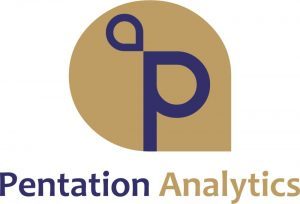 Atlas Air Worldwide is a leading global provider of outsourced aircraft and aviation operating services. From shipping precious perishables or heavy construction equipment to arranging large-group passenger charters for celebrities or dignitaries, Atlas Air’s technologically advanced fleet of 747s, 777s, 767s and 737s offers flexible, creative and award-winning solutions that meet our customer’s unique needs – quickly, safely and reliably.
Atlas Air Worldwide is a leading global provider of outsourced aircraft and aviation operating services. From shipping precious perishables or heavy construction equipment to arranging large-group passenger charters for celebrities or dignitaries, Atlas Air’s technologically advanced fleet of 747s, 777s, 767s and 737s offers flexible, creative and award-winning solutions that meet our customer’s unique needs – quickly, safely and reliably.
Atlas partnered with UConn as an outgrowth of the Company’s Elevate Initiative, an organization-wide movement to identify, innovate and facilitate opportunities to transform Atlas’ employee experience. As part of their capstone project, 37 graduate students in the Business Analytics and Project Management program were asked to develop and propose solutions to help optimize flight schedules – a significant factor impacting the quality of work life for crewmembers at Atlas. The students were challenged to find insights that would meet the requirements of Atlas customers, who look to the airline for flexibility, while taking into account crewmembers’ needs for consistency and predictability. After analyzing and compiling fully de-identified flight data records, the students presented their findings and final recommendations.
“These were some bright young people who were interested in Atlas and in the air freight business as a whole, and it really showed in their work,” said Scott Lindsay, Vice President, Crew Planning and Analysis. “They had some really good suggestions and ideas about how to approach the complex data available to us. The Company is reviewing those ideas with a plan to incorporate some of them – or elements of them – into future improvements. This was a very important exercise in our on-going efforts to improve scheduling, and these insights will help shape our thinking.”
 Clorox disinfecting wipes are the star products of Clorox, having a lion’s share of sales amongst its competitors. The company has been traditionally using just the past sales data for forecasting its immediate future demand. The major problem with these kinds of models are they do not take into account some of the very influential factors which strongly effects the sales, creating unknown pulse periods. This causes the inventory to either come short of the market demand , resulting in losing the existing customers to competitors or exceeding the market demand, which may result in over stocking the inventory. Both of which leads to loss.
Clorox disinfecting wipes are the star products of Clorox, having a lion’s share of sales amongst its competitors. The company has been traditionally using just the past sales data for forecasting its immediate future demand. The major problem with these kinds of models are they do not take into account some of the very influential factors which strongly effects the sales, creating unknown pulse periods. This causes the inventory to either come short of the market demand , resulting in losing the existing customers to competitors or exceeding the market demand, which may result in over stocking the inventory. Both of which leads to loss.





